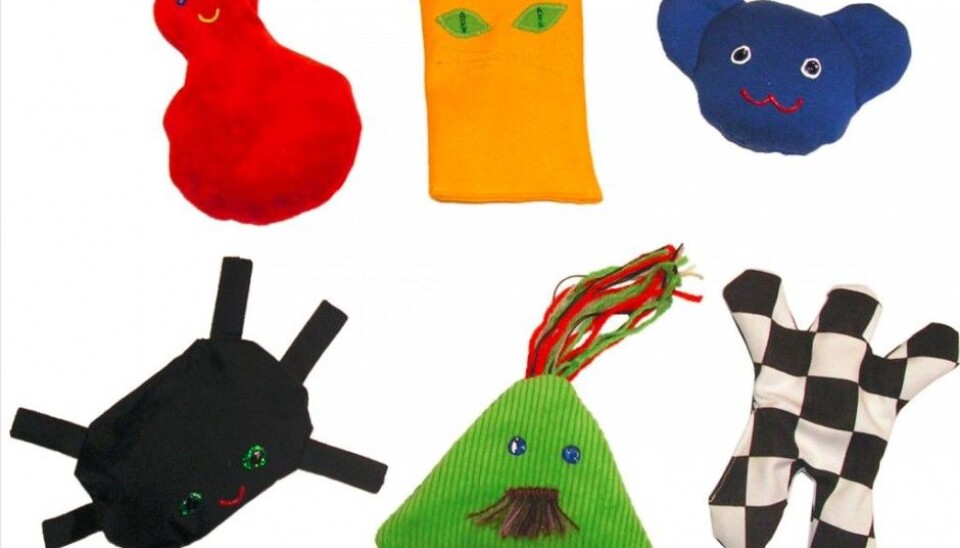
These dolls can teach autistic children better speech
Children with autism often have language problems. New research shows that hearing various language sounds while watching a little puppet or doll might help them improve.
It’s well known that many children with variations of autism and Asperger’s Syndrome can have problems learning to talk or discerning nuances of speech rhythms and tones of voice.
Yet insufficient research has been conducted on these problems.
Children normally learn at a very early age to detect and discern between various elements of sound in the floods of speech they encounter daily. But children with certain types of autistic conditions often have trouble learning such nuances in language. This is because they have difficulties relating to their own bodies while hearing and sorting among various sense impressions.
Sensitive to details
At the same time, these children can be very sensitive with regard to details. So the Swedish researcher, Pia Nordgren, reasoned that certain ways of focusing on practicing sounds and syllables could be used to improve other linguistic skills.

“We wished to see if an intervention which focused on typical traits of children with autism spectrum condition (ASC) could be used to help them develop various language skills,” says Nordgren.
The results of her research show that children with ASC can kickstart their language development if they hear words while simultaneously watching a doll or a hand movement.
Differentiating pairs of words
A typical stumbling block for such children is to hear the difference between pairs of words in which one slight difference in sound evokes two totally different meanings. Examples in English might be the words “back” and “pack”, or “duck” and “tuck”.
Nordgren introduces such pairs of words to increase the children’s awareness of contrasts between such sounds and the meanings of the words.
She followed the progress of two Swedish boys diagnosed with ASC in three different studies. Both had limited vocabularies.
The studies revealed interplay between pronunciation and gestures ― and the relationship between the two is powerful.
Animals with different names
Both boys were around six years old.
The children were presented with sounds consisting of consonants or vowels. The teachers or speech therapists made the sounds while displaying dolls. The dolls had names such as Bibbi and Titti.
“Look who is coming here?” Or “Here comes ….”
The children only needed to answer or imitate the sounds and words if they wished to.
Understanding different tones of voice
The ability to discern among variations in tones of voice is needed in Scandinavian languages as in others, for instance the Norwegian words “bønder” (farmers) and “bønner” (beans).
The “d” is silent and it can be hard ― particularly for foreigners ― to tell one from the other. Children who have trouble hearing slight changes in tones also encounter challenges with such pairs of words, even in their native tongue.
Nordgren found that the children in her study developed a comprehension of such slight changes in tone, although this was not the objective of her experiments.
The researcher thinks the study corroborates the notion that mechanisms in the brain act as a bridge between understanding speech and talking.
She thinks that listening can help make the children better at replicating the sounds by stimulating the areas of the brain where language is perceived and produced.
“This will also stimulate the use of new words and even to advanced syllables,” says Nordgren.
Using hands
The study shows that children with autism spectrum condition can be helped out by using hands when they learn speech.
“One child developed his use of hand motions even though he wasn’t being specifically trained to do so,” says Pia Nordgren.
Children with ASC and seriously delayed language developments might learn to talk as late as the age of five.
“The method can thus be useful in interventions to help these children,” says Pia Nordgren.
-------------------------------------
Read the Norwegian version of this article at forskning.no









